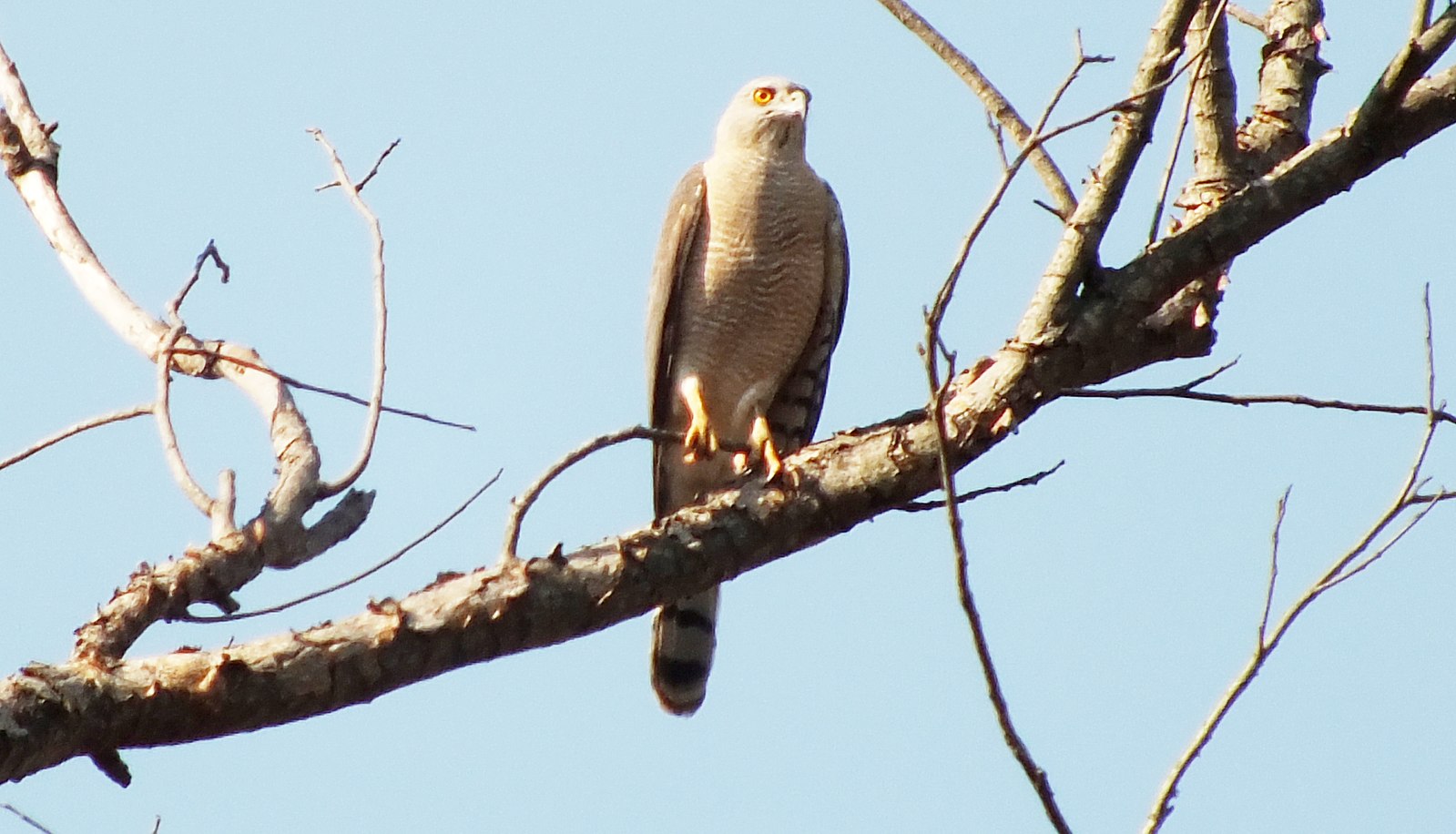Shikras, also known as the little banded goshawk, are small birds of prey that belong to the family Accipitridae. They are widely distributed across Asia and Africa and are known for their sharp two-note call and typical flap and glide flight. While shikras have a varied diet, the question of whether they eat chickens is an interesting one to explore.
Shikras’ Diet: What Do They Eat?
Shikras are carnivores and have an amazingly varied diet. Their prey includes:
- Rodents
- Squirrels
- Bats
- Small birds and their eggs
- Small reptiles (mainly lizards, but sometimes small snakes)
- Insects
Shikras have been documented taking young birds from their nests, including nests of weavers, Bronze Mannikin, and Gorgeous Bush Shrike. This demonstrates their hunting prowess and ability to target a wide range of prey.
Do Shikras Eat Chickens?
 Image source: SHIKRA by Shiv’s fotografia
Image source: SHIKRA by Shiv’s fotografia
While shikras are known to prey on small birds, there is no conclusive evidence that they regularly eat chickens. Chickens are generally larger than the typical prey of shikras, and shikras are not known to be a significant threat to domestic poultry.
However, it is possible that in some instances, a shikra may attempt to prey on young or small chickens, especially if the shikra is in an area with limited natural prey. This would be an opportunistic behavior rather than a regular part of their diet.
It’s important to note that shikras are not considered a major predator of chickens, and the impact they have on domestic poultry is likely to be minimal. Their primary focus is on smaller wild prey that is more suited to their size and hunting abilities.
Shikras’ Hunting Behavior
Shikras are skilled hunters and use a variety of techniques to catch their prey. They are known to:
- Perch and wait patiently for their prey to come within striking distance
- Actively search for prey by flying low and slowly over vegetation
- Surprise their prey by swooping down from a high perch
Their sharp talons and hooked beak make them well-equipped to capture and kill their prey quickly. Shikras are also known to cache their food, storing it in trees or other hiding places for later consumption.
Shikras’ Breeding and Nesting Behavior
Shikras are monogamous and form pairs for life. They are solitary nesters and breed in the summer between March and June in India. Their nest is a platform similar to that of crows, lined with grass. Both partners help build the nest, carrying twigs in their feet, and they may also use metal wires.
The female usually lays a clutch of 3 to 4 eggs, which are pale bluish-grey stippled on the broad end in black. The incubation period takes 18 to 21 days. When the chicks hatch, the male brings the food to the nest, and the female feeds the young. Fledgling usually occurs when the chicks are one month old, and they will remain with their parents during their first year of life.
Conservation Status and Threats
Shikras are currently classified as Least Concern (LC) on the IUCN Red List, and their numbers today are stable. However, they face threats such as habitat degradation due to harvesting of wood, overgrazing by livestock, and the use of insecticides in some areas. Electrocution on power lines is also a threat, though it is probably less common.
It is important to continue monitoring the populations of shikras and addressing any threats to their survival to ensure their long-term conservation.
Conclusion
In conclusion, while shikras have a varied diet that includes small birds, there is no conclusive evidence that they regularly eat chickens. Shikras are skilled hunters, but their primary focus is on smaller wild prey that is more suited to their size and hunting abilities. Monitoring their populations and addressing any threats to their survival is crucial for the conservation of these fascinating birds of prey.
References:
– Flickr Photo of a Shikra
– Wikipedia Article on Shikras
– Animalia Bio on Shikras
– YouTube Video on Shikras
– The Peregrine Fund’s Page on Shikras


